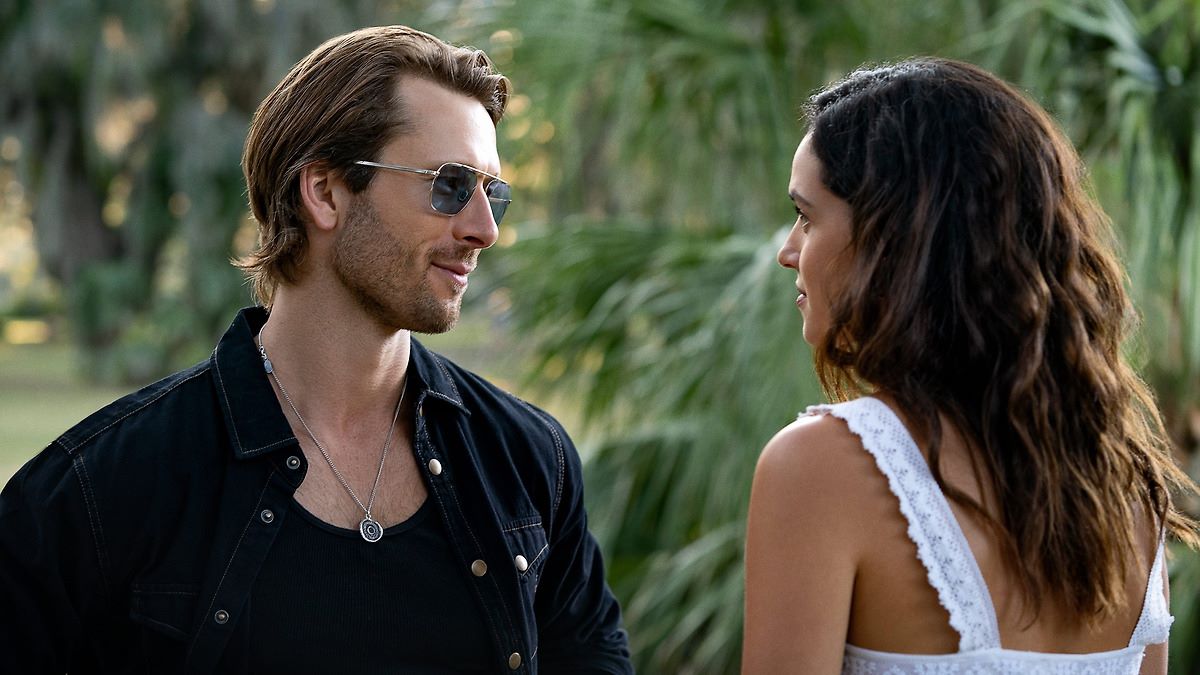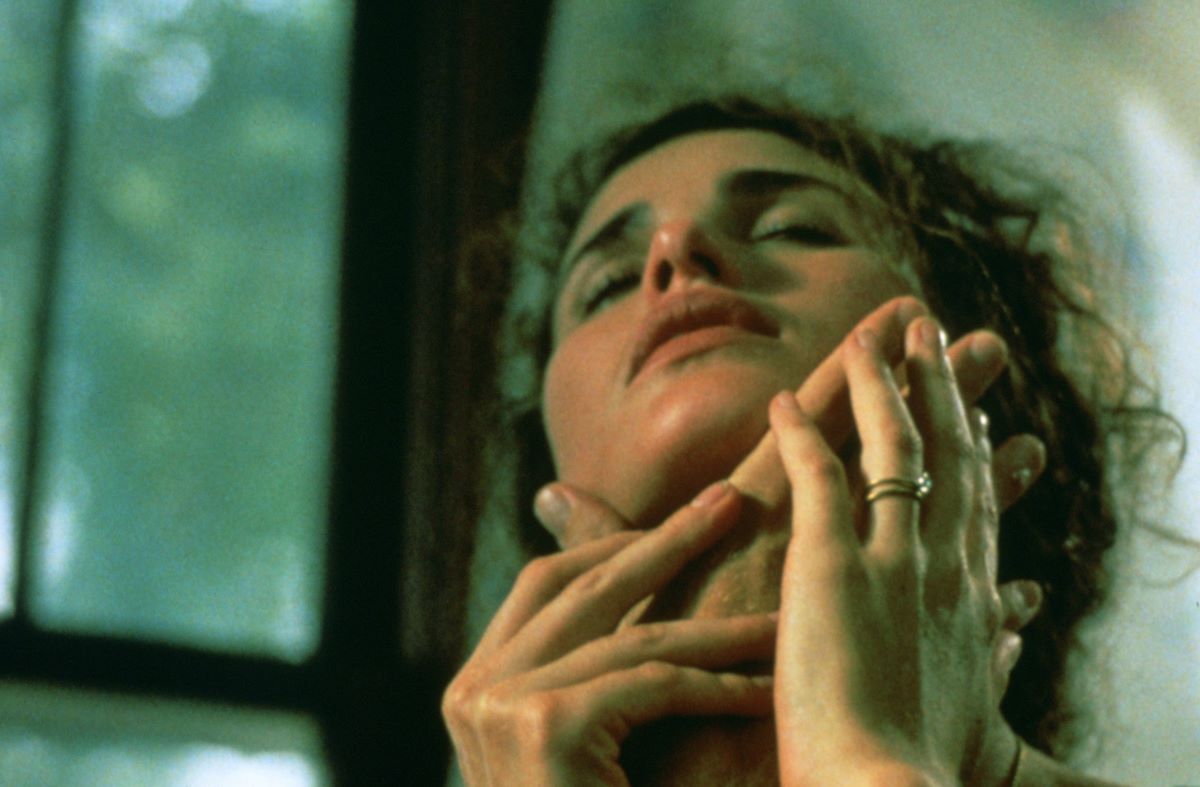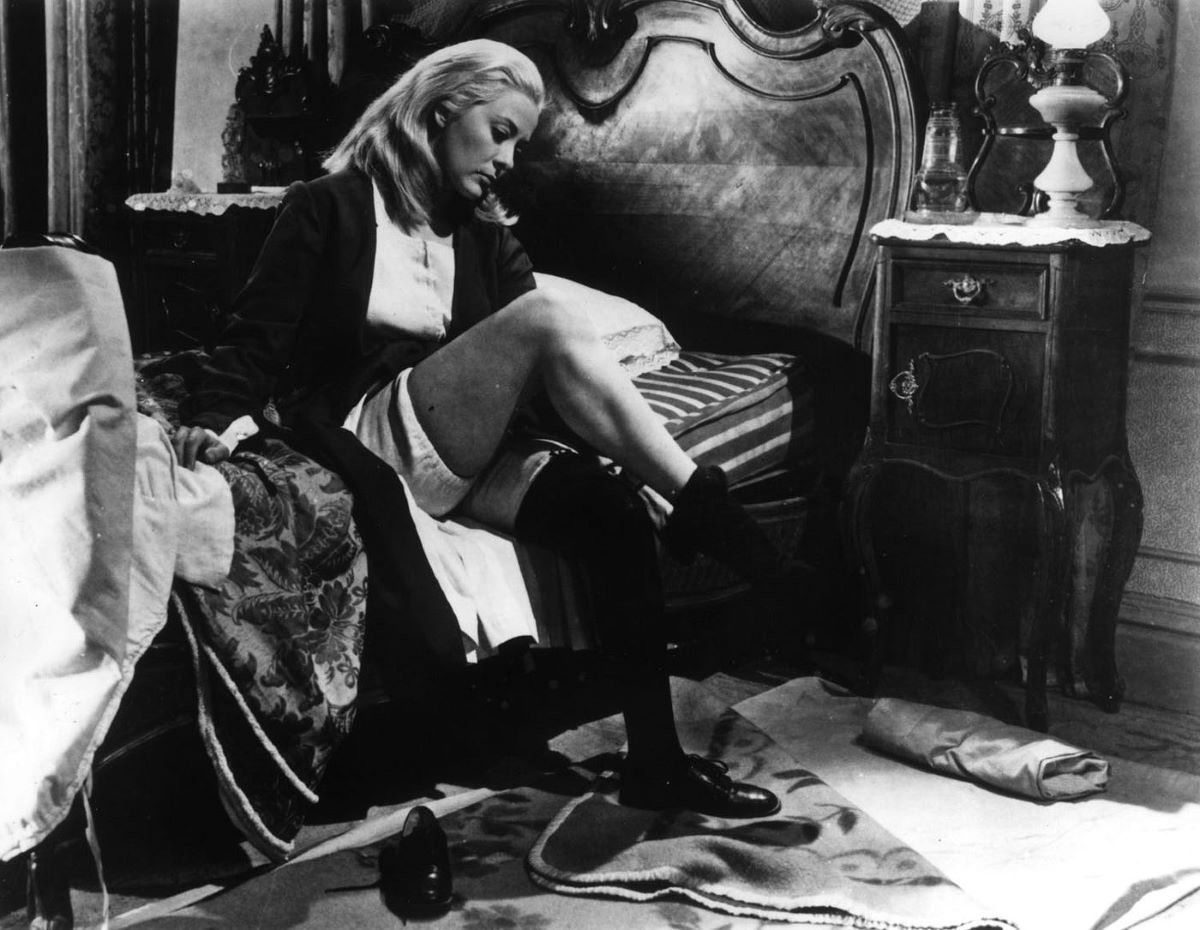Pauline Kael’s review of Carrie praises Brian De Palma’s masterful blend of horror and comedy, likening his style to Hitchcock and Polanski, but with a unique sensuousness that heightens the tension. The film, based on Stephen King’s novel, tells the story of Carrie, a repressed high-school senior with telekinetic powers. Sissy Spacek’s portrayal of Carrie, from her humiliating experiences at school to her transformation at the prom, is both touching and chilling. Kael highlights De Palma’s skill in manipulating audience emotions and his use of pop culture references to enhance the film’s impact. Despite some technical flaws, Carrie is celebrated for its thrilling, trashy charm and innovative camera work, solidifying De Palma’s reputation as a distinctive filmmaker.
* * *
The Curse
by Pauline Kael
Carrie is a terrifyingly lyrical thriller. The director, Brian De Palma, has mastered a teasing style—a perverse mixture of comedy and horror and tension, like that of Hitchcock or Polanski, but with a lulling sensuousness. He builds our apprehensions languorously, softening us for the kill. You know you’re being manipulated, but he works in such a literal way and with so much candor that you have the pleasure of observing how he affects your susceptibilities even while you’re going into shock. Scary-and-funny must be the greatest combination for popular entertainment; anything-and-funny is, of course, great—even funny-and-funny. But we come out of a movie like Carrie, as we did out of Jaws, laughing at our own childishness. It’s like watching our team win a ballgame—we’re almost embarrassed at how bracing it is.
This little gothic in a high-school setting has a script by Lawrence D. Cohen taken from Stephen King’s unassuming potboiler about a miserable, repressed high-school senior—the daughter of a fanatically religious woman—who has never been accepted by other kids. Carrie (Sissy Spacek) is so withdrawn that she’s a slug; her energy is released only telekinetically, in small ways that people don’t recognize. (Objects have a habit of crashing when she’s around.) At the beginning of the movie, she has her first period—at sixteen—in the gym shower, and doesn’t know what’s happened. She panics—she thinks she’s bleeding to death. Her ignorance makes her a scapegoat for the other girls in the gym; their ugly feelings about their own periods erupt, and, like junior versions of Russ Meyer’s Supervixens, they laugh hysterically and pelt her with tampons and sanitary napkins. The gym teacher penalizes them for their cruelty, and a few of them scheme to get even with Carrie. Their plan is to have her elected prom queen and then humiliate her publicly. What we see that they don’t see is the depth of Carrie’s desire to be accepted by them. Her joy at having Tommy, the most popular boy in the class, ask her to the prom and at becoming prom queen transforms her; her home life is so horrible that this is her first taste of feeling beautiful, and she’s a radiant Cinderella. De Palma, a master sadist, prolongs her moments of happiness; he slows the action down to a trance while we wait for the trap to be sprung, knowing that it will unloose her bottled-up telekinetic anger. It’s a beautiful plot—a teen-age Cinderella’s revenge. Carrie becomes a new trash archetype, and De Palma, who has the wickedest baroque sensibility at large in American movies, points up its archetypal aspects by parodying the movies that have formed it—and outclassing them.
De Palma was born in 1940 and started moviemaking when he was a sophomore at Columbia, in 1959. Carrie is his tenth feature. His eighth, Phantom of the Paradise, a rock-horror satire, was, I thought, an underground-movie explosion—a slapstick Guignol mad ball—but it got a substantially bad press and is just now going into general release. His ninth, Obsession, though no more than an exercise in style, with the camera swirling around nothingness, was great on-the-job training for Carrie. Here, the layered gags that have always been his specialty are joined to his new sweeping, circling camera movements. In the Joyce Carol Oates story “Where Are You Going, Where Have You Been?” a teen-age girl’s desire for romance also turns into a teen-age nightmare, but the story has the ineluctable National Enquirer horror that often makes one recoil from Oates, wanting to go on reading yet not sure if one can bear what’s coming. De Palma’s humor—his delight in trashiness—saves us from that kind of distress. Carrie is a menstrual joke—a film noir in red. This picture has some of the psychic grip of Taxi Driver, yet isn’t frightening in the same way, because it’s essentially a pretty piece of paste jewelry. Carrie looks like a piece of candy: when De Palma is most distinctive, his work calls up so many junky memories it’s pure candied exploitation—a funny archetypal nightmare. De Palma uses tawdriness as a tuning fork. No one else has ever caught the thrill that teen-agers get from a dirty joke and sustained it for a whole picture.
There are no characters in Carrie; there are only schlock artifacts. The performers enlarge their roles with tinny mythic echoes; each is playing a whole cluster of remembered pop figures. Sissy Spacek’s Carrie goes to Bates High—Norman Bates ran the motel in Psycho—and her gym-shower scene is a variation on the famous Psycho shower. At home, Carrie is the unloved Patty Duke in the early scenes of The Goddess, but when, having made herself a dress, she goes to the prom, she’s also Katharine Hepburn in Alice Adams, and when she’s with her yellow-haired escort, the sensitive jock Tommy (William Katt), they’re a puppy-love version of Streisand and Redford in The Way We Were, (“Love Among the Stars” is the theme the students have selected for their prom.) After Carrie’s fall from grace, she’s a teen-ager gone bad, an avenging angel with a fiery sword. At her command, fire hoses stand up like hissing serpents and attack her schoolmates, and she moves through the pandemonium with psychedelic grace, as remote as the queen in She.
De Palma has a background in theatre as well as in film; he’s very canny about young performers (in his first, shoestring feature, The Wedding Party, he used Jill Clayburgh and Robert De Niro), and he appears to have had a freedom in casting which wasn’t evident in Obsession. William Katt doesn’t just look like Redford but acts like a fantasy of Redford at seventeen. The dark girl with the frizzies who persuades Tommy to take Carrie to the prom is played by Amy Irving; this girl’s involvement in trapping Carrie is left too ambiguous, but Amy Irving is affectingly troubled in every scene she has, right up to the film’s last shocker, when De Palma does a triumphant reprise of a poorly staged bit in Deliverance. (The shocker here is as startling as Finlay Currie’s appearance in the graveyard in Great Expectations.) The older “normal” characters don’t have much life; there’s no ricochet effect from the movies they’re drawn from, and they’re just puppets. But the high-school students—each with a whopper crop of hair—bounce off the beach-party movies and Peyton Place and Splendor in the Grass and American Graffiti. The villains, the exuberant, beer-guzzling Billy (John Travolta, who might be Warren Beatty’s lowlife younger brother) and his bitchy girlfriend Chris (Nancy Allen), with her lewd dimples and puffed ringlets, have the best dialogue— their language is so stunted that every second word is profane. When these two make out in a car, Andy Hardy is brought up to date: besieged by a voracious female, he’s the Neanderthal stud in a porno. Later, when Billy and Chris are enjoying their viciousness to Carrie, they have a bile-green tinge like Margaret Hamilton in The Wizard of Oz.
Though few actresses have distinguished themselves in gothics, Sissy Spacek, who is onscreen almost continuously, gives a classic chameleon performance. She shifts back and forth and sideways: a nasal, whining child pleading for her mother’s love, each word scratching her throat as it comes out; a chaste young beauty at the prom; and then a second transformation when her destructive impulses burst out and age her. Sissy Spacek uses her freckled pallor and whitish eyelashes to suggest a squashed, froggy girl who could go in any direction; at times, she seems unborn—a fetus. I don’t see how this performance could be any better; she’s touching, like Elizabeth Hartman in one of her victim roles, but she’s also unearthly—a changeling. Though her showiest scenes are the luminous moments with her fresh-faced, lion-maned young Redford, her acting range is demonstrated in the scenes with her loony mother—played by Piper Laurie, in a spectacular return to the screen. (Her last film was The Hustler, in 1961.) They’re marvellously matched, and they perform ducts on themes heard earlier from Tuesday Weld and Lola Albright in Lord Love a Duck. The skinny, croaking Carrie, with her long, straight reddish-gold hair, and the ripe woman, with her mass of curly red hair and deep, pipe-organ voice (the chest tones of an evangelist or of a woman giving testimony in church), are beautiful in such different Pre-Raphaelite ways that their scenes go beyond the simple mother-daughter conflicts of the rather crude script. Piper Laurie’s face is soft—she’s like a rosy Elizabeth Taylor—and you feel that the daughter is bound to her by ties of love and pain. This fundamentalist mother is powerful and sexy, yet she sees herself as a virgin damaged by sex. When the wounded daughter retaliates against her mother’s assault, and the kitchen utensils fly into Mama, pinning her like St. Sebastian, Piper Laurie’s face is relaxed and at peace—she’s a radiant martyr in a chromo. Like Bufiuel, De Palma has a sacrilegious sense of humor; he plays with a sense of sin.
The director James Whale worked sophisticated parody into some of his horror films, such as The Old Dark House, in 1932, and The Bride of Frankenstein, in 1935, but I don’t think that before Carrie anyone had ever done a satiric homage to exploitation films. Who but De Palma would think of using old-movie trash, and even soft-core pornos, to provide “heart” for a thriller? The banal teen-age-movie meanness that the kids show toward Carrie gets the audience rooting for her, and it becomes the basis for her supernatural vengeance. This is the first time a De Palma picture has had heart—which may explain why De Palma, despite his originality, has never made it into the big winners’ circle before. I liked the surreal sophomoric humor of his 1968 X-rated Greetings, with its draft-dodger hero; the style was deliberately offhand. In those days, De Palma didn’t move the camera much; he used a lot of single-camera setups that went on for several minutes—he let the actors play out their scenes. When he did move the camera, sometimes the movement was itself a gag—a parody of film “magic.” His early films were cheaply made and badly distributed, but even so they didn’t score with young audiences as they should have scored. Maybe this was the audiences’ fault as much as his. Like some others of us, he probably assumed that counterculture movie-lovers had much hipper tastes than they turned out to have; they didn’t go for the old patriotic, pro-war sentimentality, but they wanted more emotion and romance than De Palma, with his sense of the ridiculous, provided. However, he was always primarily a creator of comedy, an entertainer, so if the audience wouldn’t change, he had to.
By the time of Obsession, De Palma had dropped his theatrical play-out-the-scene style; rock had unified the wild Phantom of the Paradise, but the camera itself did it for Obsession. He made a romantic movie without, as far as I can judge, a single romantic impulse; he was proving that he could tell a fluid, rhythmed story—that he could master camera magic. It was all calculation—camera movements designed to make an audience swoon. If the De Palma spirit was barely in evidence in Obsession, that was because the romantic conception operated on only one level; it lacked humor—this is where Paul Schrader, its scenarist, is weak (a weakness compensated for by the director and actors in Schrader’s Taxi Driver). And Obsession lacked good, cheap dirt. In Greetings, Allen Garfield had hawked stag films; De Niro was a voyeur making Peep Art films in both Greetings and De Palma’s Hi, Mom! After the rarefied phoniness of Obsession, De Palma has come back to his own exploitation themes in Carrie; the voyeur has got into the girls’ locker room this time, bringing that romanticizing, hypnotic camera with him. De Palma was always a sexual wit; now he’s a voluptuary wit, with the camera coming very close to Sissy Spacek’s body, and with closeups of her wraithlike, hair-veiled face. We know her skin better than we know our own.
The technique is so absorbing that I don’t think I blinked during Carrie. I assume that a virtuoso combination of the spiky editing of Paul Hirsch and the special effects by Gregory M. Auer is what gives us images such as Carrie’s eye exploding a car. Mario Tosi’s slithering cinematography seemed especially effective in Carrie’s California-gothic home, and I assume that the art directors, William Kenny and Jack Fisk, made that possible. The music for Obsession was so emotive that the picture drowned in its score; the Pino Donaggio music for Carrie is modest and inoffensive, though more derivative than one might like. There are only a few places where the film seems to err in technique. The speeded-up sound when the high-school boys are trying on tuxedos is a dumb, toy effect. And at the prom, when Carrie sees red, the split-screen footage is really bad: the red tint darkens the image, and there’s so much messy action going on in the split sections that the confusion cools us out. But the film is built like a little engine, and it gets to us.
For a sophisticated, absurdist intelligence like De Palma’s, there’s no way to use camera magic except as foolery. He’s uncommitted to anything except successful manipulation: when his camera conveys the motion of dreams, it’s a lovely trick. He can’t treat a subject straight, but that’s all right; neither could Hitchcock. If De Palma were an artist in another medium—say, fiction or poetry—he might be a satirist with a high reputation and a small following. Everything in his films is distanced by his persistent adolescent kinkiness; he’s gleefully impersonal. Yet, working in movies, he’s found his own route to a mass audience: his new trash heart is the ultimate De Palma joke.
The New Yorker, November 22, 1976





